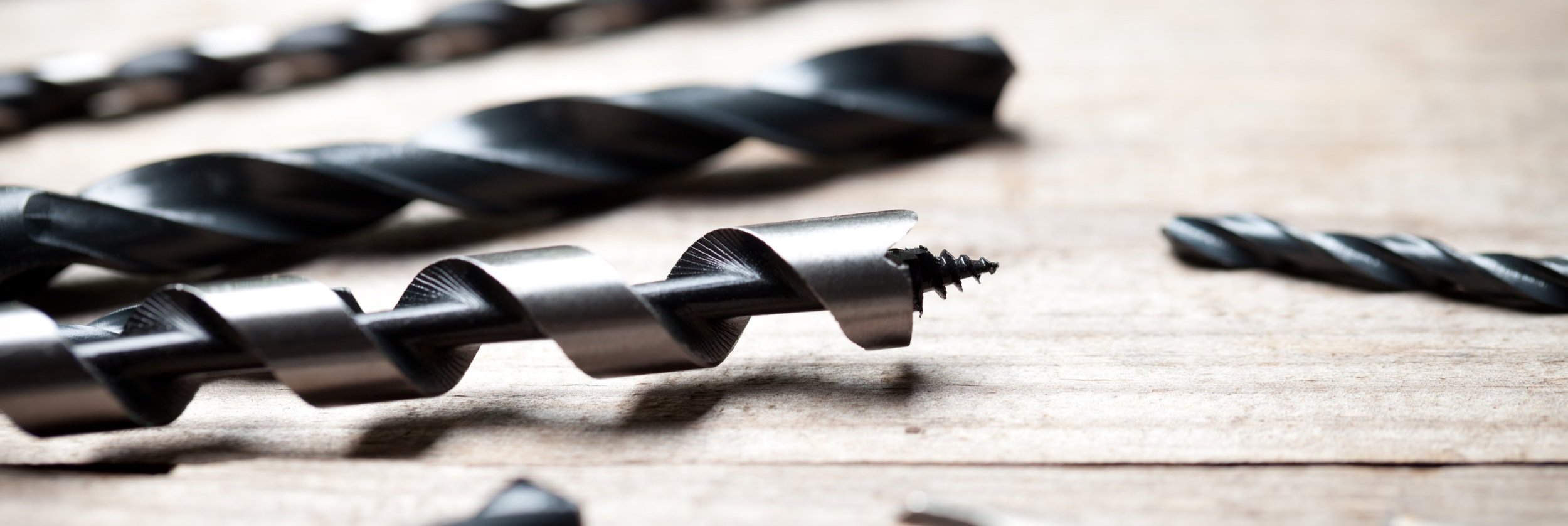Know the Drill about Bits for DIY Home Improvement
Do you enjoy dabbling in home projects, or are you an avid DIYer? No matter your home improvement level, a power drill and drill bits are must-have tool kit items.
They are much easier and quicker to use than hand-powered tools and are essential for pre-drilling holes for screws and nails. So, drill down into your DIY home improvement skills by knowing the ins and outs of drill bits and which are best for specific projects.
Screws vs. Nails
Screws are better than nails as a fastener, such as for grip strength (meaning they can withstand vertical force) like holding two pieces of wood together for cabinets and bookcases. A hammer and nails are usually only used when securing carpentry applications such as trim carpentry or wood framing.
Bit By Bit
Use drill bits for different applications, but commonly for steel, metal, wood and masonry. The following are the various types of drill bits:
Twist Drill Bits: These are the most common bits and can drill through wood, plastic and metal products, but not concrete or masonry.
Brad Point Drill Bits: These bits have a center pin that provides precise, clean and accurate holes in wood.
Masonry Bits: These bits have a tighter corkscrew shape with a diamond-shaped stainless steel tip to drill through concrete, stone and brick.
Spade Bits: These bits – also known as saddle bits – have two cutting edges with a sharp point at the center to drill large holes in wood.
Step Bits: Also known as a unibit, step drill bits resemble a tiny Christmas tree. These cone-shaped bits with stair step-like grooves can drill various size holes in sheet metal and other thin materials.
Auger Bits: These feature a spiral shape and long shank to drill deep and clean holes in wood.
In addition to pre-drilling holes, drill bits can remove rivets, which are permanent mechanical fasteners that connect two or more pieces of material.
What Size Bit to Use
The wide range of drill bits may seem confusing, but each bit will show what it is rated and recommended for use. Additionally, whatever you are installing will include a bit size recommendation. If not, use a piece of hardware to measure the size of the bit needed.
Pro Tips
If you are building out your tool collection, a power drill and drill bit sets are an essential addition. Consider a drill set, which usually comes with two different types of drills – including an impact driver – and a starter bit set. Craftsman makes a good and inexpensive starter bit set with various types and sizes.
Wear protective eyewear when using a power drill and ear protection if using an impact driver.
When using a power drill, avoid going too fast, which can strip screw heads or damage materials when pre-drilling holes.
Before you set out on your next DIY project that involves a drill, plan out the materials, drill bits and other tools you need. Using the wrong drill bit can damage the bit and even the drill. Be proactive and do your bit to do some research and ask questions. It will help make your project go smoother and protect your tools. Plus, you’ll be thrilled to bits with the finished project.

